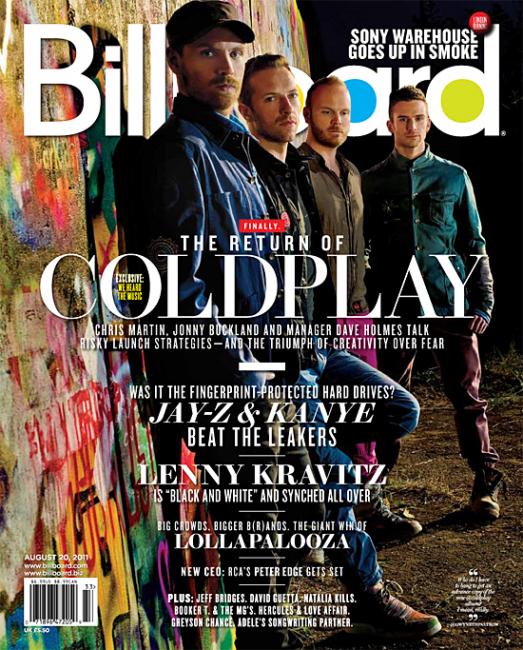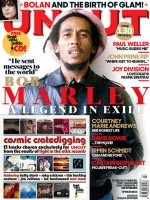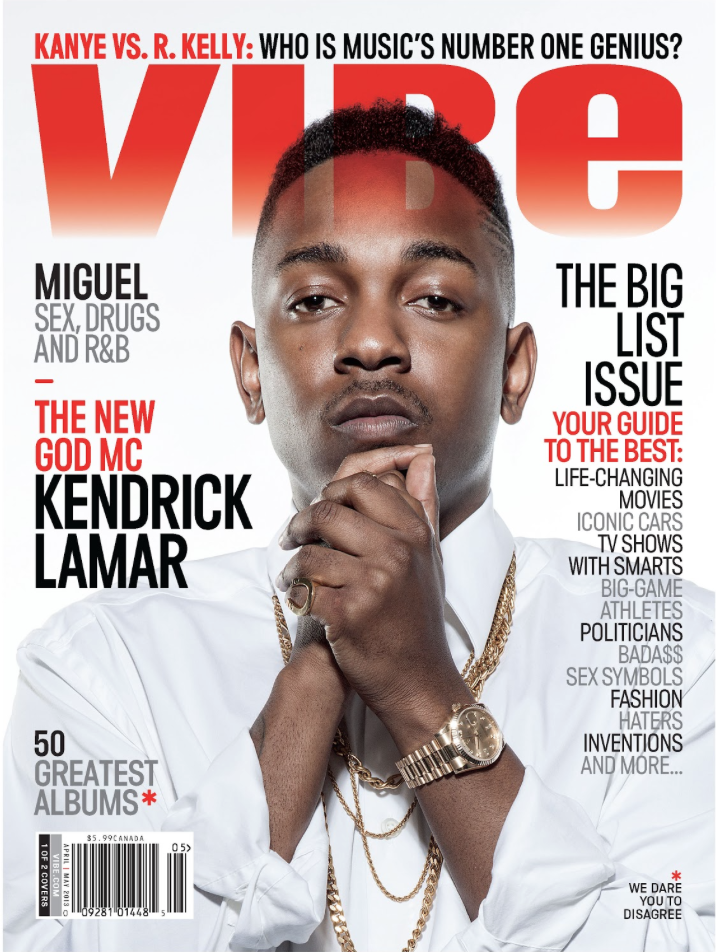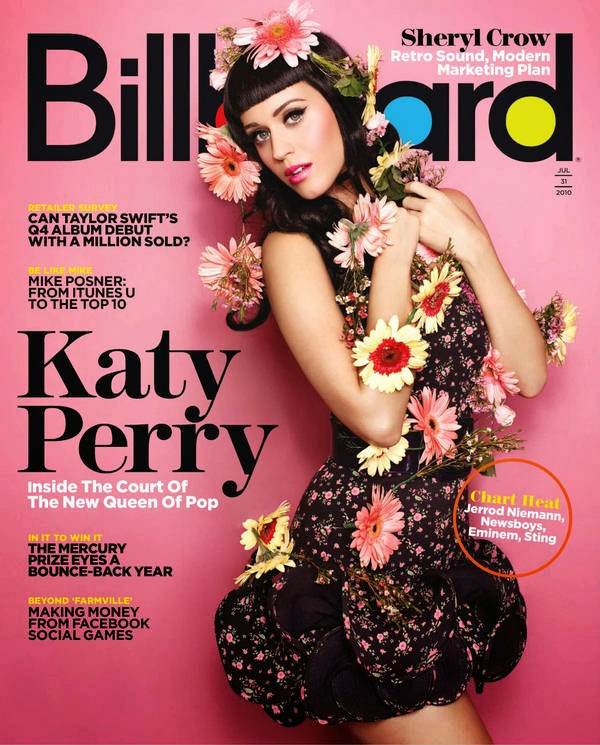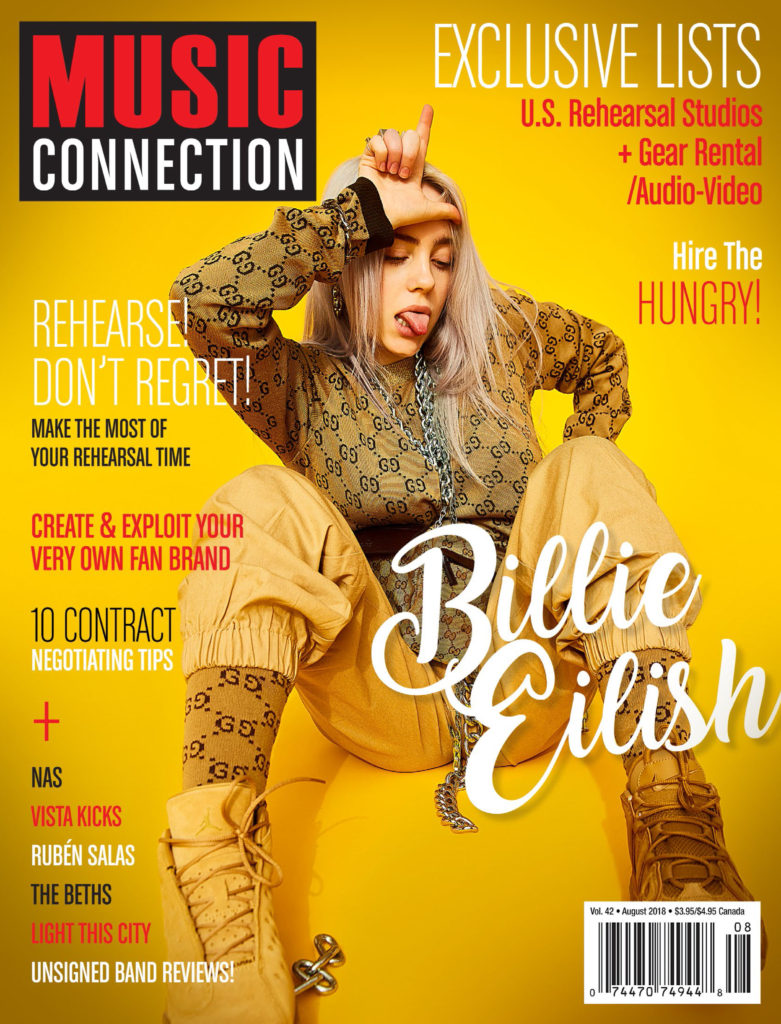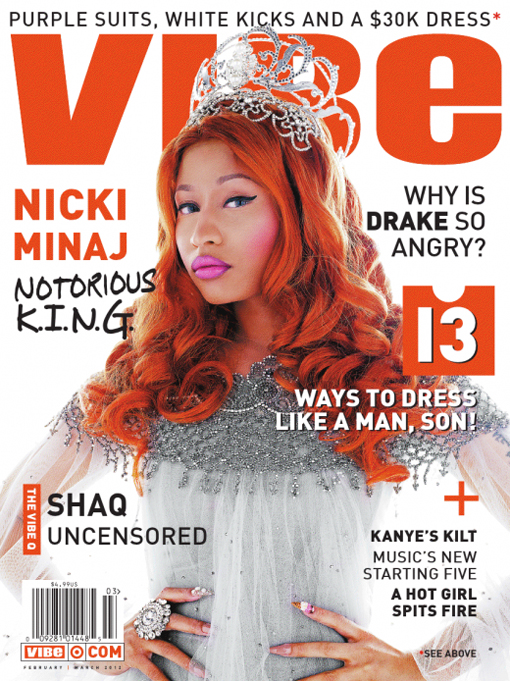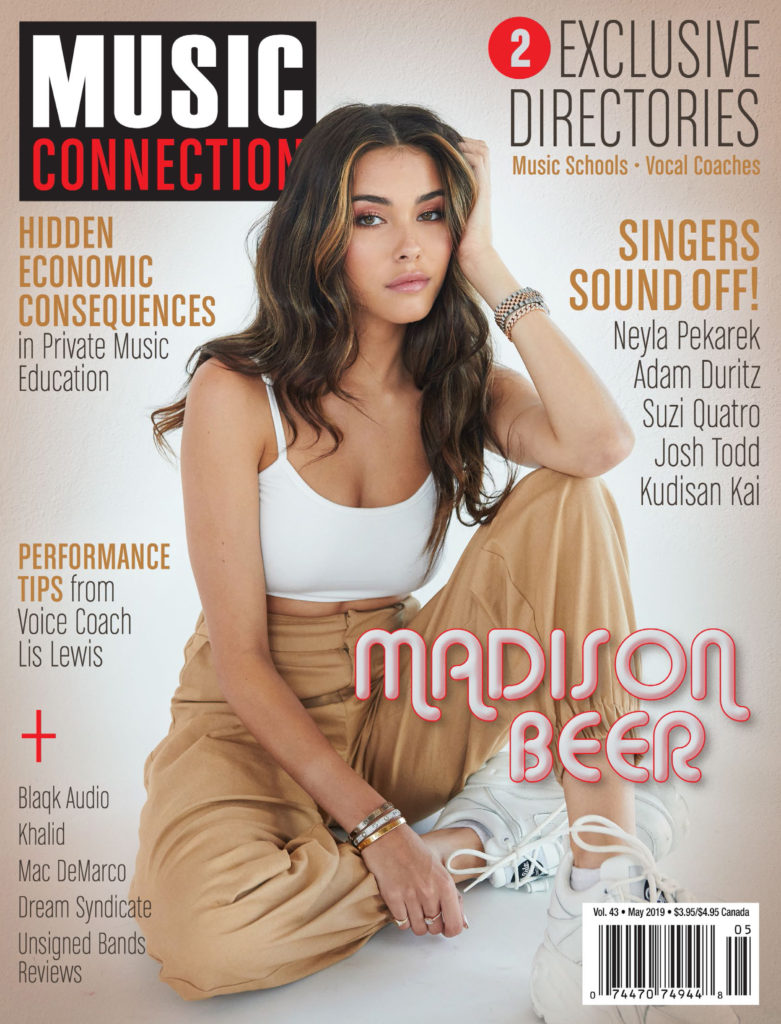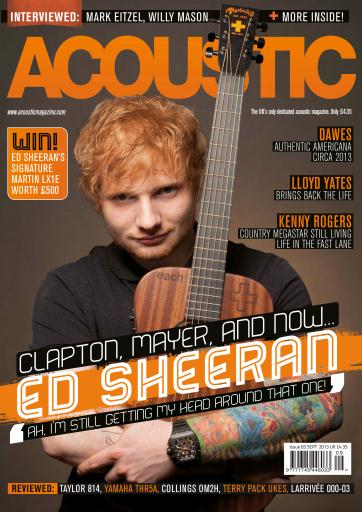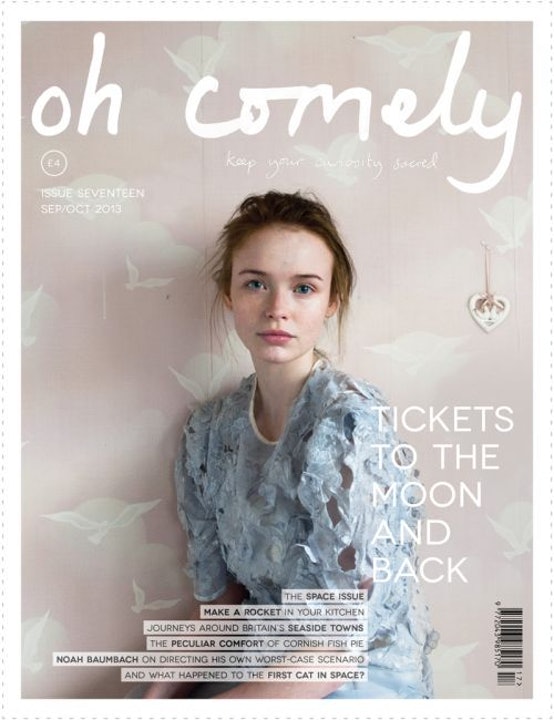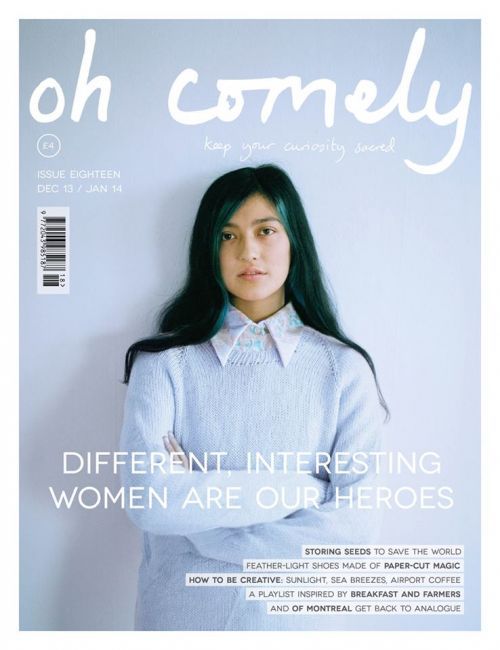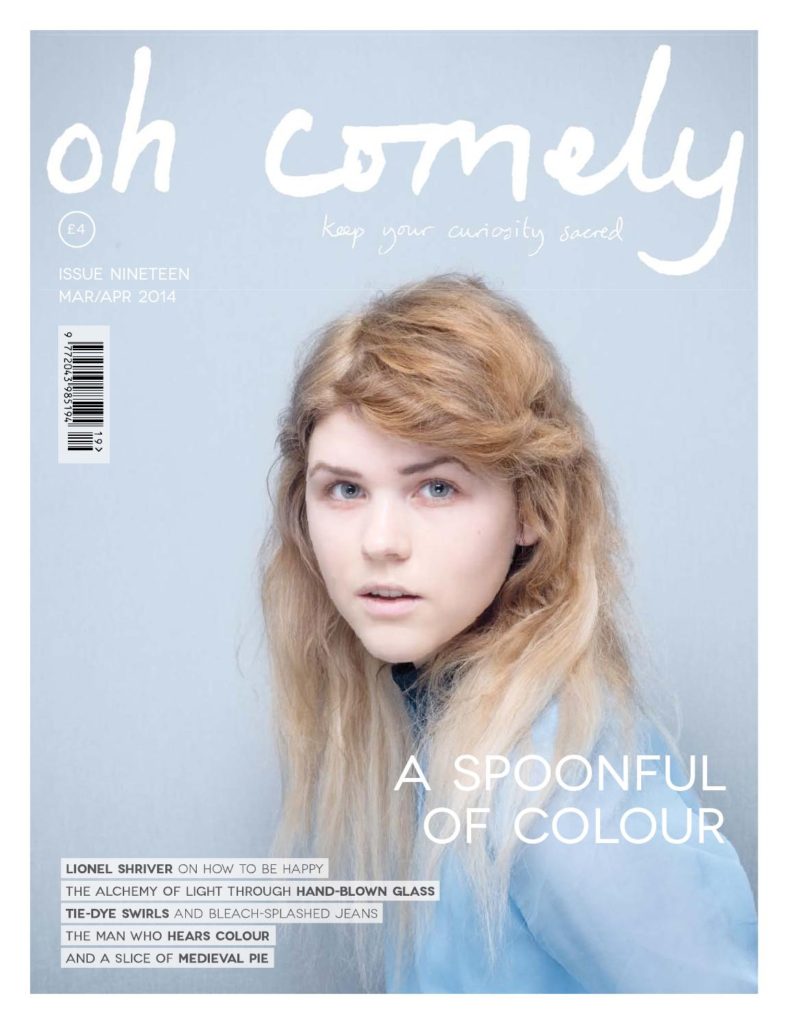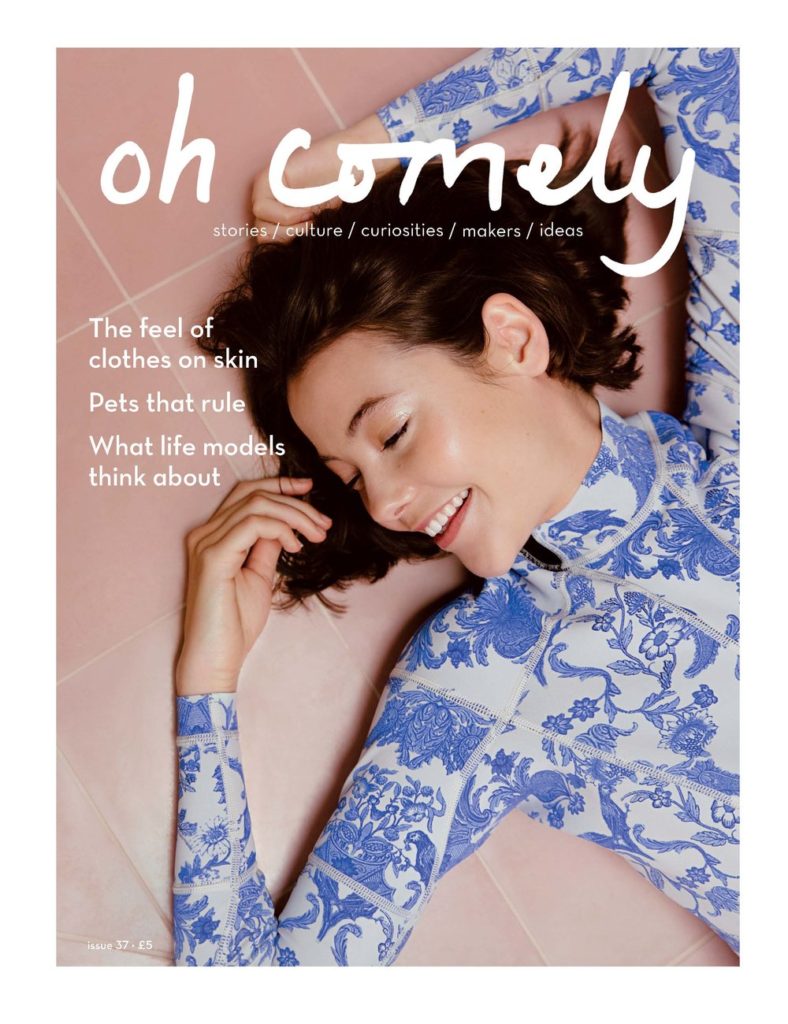All posts by Emily B
Filters
Judith Butler and Gender Performance Essay
NOTE: I did this essay back in lockdown, so I have copied and pasted my essay and added more theorists and contextualisation
Judith Butler describes gender as an “identity instituted through a stylised repetition of acts”. In other words, it is something learnt through a repeated performance.
How useful is this idea in understanding how gender is represented in music videos? Refer in detail to your chosen style models.
Judith Butler is an American philosopher and gender theorist whose work influenced political philosophy and ethics and also the fields of third wave feminism. Her work was influenced by Jacques Lacan and Karl Marx and her work is famous for having notable ideas on gender performance and gender as a social construction. Jacques Lacan came up with the mirror theory, which explores how in infants first identify themselves by seeing their reflections in a mirror, thus identifying that people may look at media and interpret it in different ways and will therefore possibly have a different understanding of it compared to others.
Another theorist that can be linked to the representation of genders in media is bell hooks. bell hooks is a theorist who said that we need to engage with popular culture in order to identify class struggle domination, renegotiation and revolution. An example of bell hooks’ statement includes one of my chosen music video style models, Just the Way You Are by Bruno Mars because the video includes both a Latino male and a woman of white skin colour. We can also analyse gender representation through the theorist Van Zoonen, who believed that the media portray images of stereotypical women and this behaviour reinforces societal views. This links to both Just the Way You Are and Sunflower because women are presented as sex symbols and the music videos follow the dominant ideology on the representation of women. This is because in Just the Way You Are, Bruno Mars is singing about the perfect features his crush has and the women is presented to be seen as a sex symbol by males through the use of her minimalist clothing (skimpy shorts) and the shots of the side portfolio of the women, which defines her breasts. Similarly, Sunflower does the same technique as Just the Way You Are and emphasize the women’s breast and buttocks, thus creating voyeurism towards the male audience.
To begin with my analyses, I will explore in the representation of one of my style models, Just the Way You Are by Bruno Mars. At the beginning of the music video, we are shown a young women in an off the shoulder top with tattoos on show and she is wearing a pair of skimpy shorts. This links to Mulvey’s theory, where Mulvey said that “the cinema offers a number of pleasures”. One of the pleasures Mulvey talks about it voyeurism, which is the sexual pleasure gained from looking. This suggests that the female gender is seen as a sexual pleasure for the male gender, which is also supported by the fact that throughout the music video, it is apparent that Bruno Mars has fallen in love with the female, because he strokes her cheek, sits next to her and hugs and also when the camera is focused on the two characters, Bruno Mars appears to be looking into the eyes of the female character. It is also significant that Bruno Mars is Latino, whereas the female character he appear to fall in love with has white skin. The song was released in 2010, which is just before the fourth wave of feminism began and this was when feminism aimed to recognize the use of new social media platforms to connect, share and recognize new experiences and responses. This is significant by the way the song was released on new and upcoming music streaming platforms, such as YouTube, Apple Music, and Spotify. However, it is apparent that this music video is trying to bring a historical message, which is shown by the way that the female character is listening to music off a cassette tape. The song is modern, hence being released in the 2010s, however Bruno Mars, a Latino, falling in love with a white women links to the third wave of feminism and identifies that you can find love, no matter what your skin color is. Therefore, the music video is delivering a subliminal message that from the age of the cassette tape, you can love whoever you want, you don’t need to be restricted like in the past. Following on with Mulvey’s theory of how the “cinema offers a number of pleasures”, another pleasure Mulvey talks about that is being presented in the music video is fetishism, which is when parts of the female body are made to be looked at. This fetishism is shown in the music video through the beginning close up, panning upwards of a beautiful female figure, closing her eyes and her face is tilted towards the light. The women’s face is also focused on and the background is blurred, thus identifying that the female figure is the key attraction and needs to be focused on. Finally, when the shots of Bruno Mars appear, he maintains eye-contact, which can also be seen as the “male gaze”, since Bruno Mars is singing about how much he loves the woman figure and how her features are perfect, thus linking to the fetishism (Mulvey’s male gaze theory) presented in this music video.
My second style model I will be talking about is Sunflower, by Post Malone and Swae-Lee. This music video is complete animation (compares to Just the Way You Are having some elements of animation and some real life shots) and was released in 2018, which was during the fourth wave of feminism, which focused on new issue arising in the 21st century, such as rape, pornography, body shaming and privacy. To begin with, the male protagonist is a regular school boy, however he is also Spider-Man. This links to the third wave of feminism which demonstrated pluralism towards race, ethnicity, skin color, religion and nationality because stereotypically, all the Marvel superheroes and villains appear to be of white skin, however, the song the movie is part of, Spider-Man: Into the Spider-verse breaks this stereotype and includes people with black skin, thus being all inclusive and identifying that you can’t be restricted from doing what you want due to the color of your skin. When the protagonist is at school during the music video, Mulvey’s theory of voyeurism is shown because the female character appears to gaze into the eyes of the audience and appears to be “perfect” in the way she has luscious long, blonde hair and bright blue eyes, which grabs the attention of the audience. Mulvey’s theory of fetishism is also shown when there is a close up of a man holding a photo frame of a women. The male figure appears to be blurred, with the main focus on the female figure, which identifies that the main focus on the music video is of this female character. In the close-up of the photo of the female, the sense of fetishism is shown through the way the female character has a big smile, with her white teeth and bright red hair being the main attraction to gain the audiences attention. The female is also standing sideways, thus following the dominant ideology of women are seen as a sexual pleasure as she is showing off her curves, which also links to CSP 1 on Lara Croft: Tomb Raider. Finally, Mulvey’s theory of fetishism is shown when the masked women removes her mask and there is slow motion of her hair swaying in the wind. The women, once again, is standing side on, possibly to emphasize her feminine features, such as her curves and her bright green eyes attract the audiences attention, while she establishes a “female gaze”, thus creating a sexual pleasure for the audience, gained by looking at the female character.
Next, I will talk about the representation of gender in the music video The Scientist by Coldplay. Chris Martin maintains eye contact with the listener and it can be argued that the eye contact creates a “male gaze”. This links to Mulvey’s thesis, who identified that the male gaze suggest that women create a sense of voyeurism, which is the sexual pleasure you gain in looking. Similarly, The Scientist was released in 2002, which was during the time of the third wave of feminism. During the third wave of feminism, people had came to the realization that women were of different cultural backgrounds, ethnicities, nationalities, skin colors and religions. This is identified in the end of The Scientist when Chris Martin is driving along with a women in the passenger seat. This women appears to be white and the women appears to be sexualized through the way she takes off her jacket and appears to be wearing a very “revealing top”. The clothing choice of the women figure links to Mulvey’s theory, where she talks about voyeurism, the sexual pleasure gained from looking. Therefore, it is significant that from Mulvey’s theory, women are usually seen wearing skimpy clothing, therefore they are seen as a symbol for sexual pleasure towards men. Finally, this music video is quite contradictory, as women are usually seen as the workers, whereas the man goes off to work, but this music video has a reverse narrative and the protagonist is seen in the beginning, lying on a mattress in what appears to be a poorer part of London, which is identified through the vandalism, and how there are no houses nearby.
Next I am going to discuss the 2 Magazine CSPs, Oh and Men’s Health. Oh is a female-orientated magazine which is published by Pirates Ahoy!, a subsidiary of Iceberg Press. Oh focuses on food, recipes, film, fashion, music, art and culture and is distributed both as an online magazine or printed as a physical copy. Contrastingly, Men’s Health is a male orientated magazine and published by Hearst Communications, which is a conglomerate media corporation in America and its subsidiaries include Lifetime Entertainment Services. It can be argued that the magazine “Oh” is breaking the stereotype of women. In stereotypical female -orientated magazines, women are sexualised by wearing revealing clothes and the photo usually include their breast area, which can create a sense of voyeurism towards males who may view this magazine. This links to Mulvey’s theory on the male gaze as women are viewed as a sexual object, rather then as a human. However, Oh challenges this gender stereotype and instead has their models on the front cover wearing very covering clothes and the shots of the models are only head shots or the model’s arms are covering their breasts, which is taking away the stereotype of woman being seen as a sex symbol. This can be seen as empowering to women and removes the stereotypes we associate with women within magazines and the use of only females in the magazine identify that the prime target audience is women. However, Men’s Health is very contrasting in the way it represents males. Unlike Oh challenging the dominant ideology held against women, Men’s Health follow the stereotypical views people have of men: strong and powerful. This is shown on the front cover of Men’s Health by the use of Vin Diesel having muscles and the clothing choice to emphasize the muscles the male has. Similarly to Oh, Men’s Health uses only male figures in their magazine, thus identifying that their target audience is males.
To conclude, males and females are represented very differently in the music videos I have chosen as my style models and within both Oh and Men’s Heath. A majority of the music videos I have chosen include women, however these women are seen as a sexual pleasure and the men gain a sense of fetishism and voyeurism towards them, identified by the close up of the female and the “male gaze” that is established from the male character towards the camera. The females also appear to be wearing minimal clothing, such as skimpy shorts and a very revealing top, thus identifying they can be seen as a “sex symbol” and the minimalist clothing creates a voyeurism towards the male audience that may view the media. The women figures also have “perfect features” and linking to the fourth wave of feminism, identify what the perfect women should look like, which in today’s world is bad as it leads to women becoming insecure of how they look and it may cause them to gain ad habits, such as starving themselves to be this “perfect figure” that you see in music videos. However, it can be argued that Oh is a radical magazine because it takes away the representation of women being seen as a sex symbol, which is identified by the use of shots of the female models from the shoulders up and the women wearing long sleeved clothing, rather then the common minimalist clothing we associate with females within magazines, wheres Men’s Health follows the dominant ideology held towards males, which is shown by a muscly Vin Diesel on the front cover and the double page spread including a man running, which creates the dominant ideology that all men are fit and strong. The male’s strength is also identified by Vin Diesel showing off his muscles on the front cover of Men’s Health in a vest top..
CSP 11: OH MAGAZINE
Facts:
- Previously known as Oh Comely Magazine
- It is a women’s magazine covering food, recipes, film, fashion, music, art and culture.
- The first issue of Oh Comely was published in 2010 and co-edited by Des Tan and Liz Bennett, with Rosanna Durham and Dani Lurie as art editors
- Oh is a bi-monthly British magazine
- Oh is published in print and digitally, made in London by a small indie publishing house started by three friends.
- You can find Oh in some Sainsbury’s and Waitrose, most WH Smiths and many small newsagents, indie mag shops and some cafés, museums and galleries.
- With beautiful photography and illustration at its heart, Oh is a place to meet new people, hear their stories and leave you looking at life with a little, welcome fresh perspective.
- Oh Comely got its name from a beautiful and sinister song by Neutral Milk Hotel.
- The average age of Oh’s reader is aged 27.
Who owns Oh?
- It is published by Pirates Ahoy! a subsidiary of Iceberg Press, publisher of The Simple Things magazine.
- Iceberg Press announced their purchase of Oh Comely from Adeline Media in 2016.
Lisa Sykes: Editorial Consultant
- She previously edited national newsstand magazines by her mid-twenties before working on news and features at The Sunday Times.
- More recently she spent 10 years at Country Living Magazine, where she was responsible for a string of award-winning campaigns such as Fair Trade for British Farmers, Enterprising Rural Women and Made in Britain.
- Lisa then spent further stints at Hearst Magazines UK, working as Deputy Editor of Coast Magazine, as a senior editor on Good Housekeeping, and as Editor of Prima, one of the largest circulating women’s titles in the UK.
- She then joined The Simple Things as Editor in November 2013 after working for Future Publishing as an editorial consultant.
David Parker: Analyses Oh’s Audience
- David Parker is a highly successful publisher with a track record of growing brands and working every avenue and margin in the business.
- He published three of the largest magazine brands in the UK: Country Living, Prima and House Beautiful, alongside AllAboutYou.com
- David believes that lots of magazines have given up on their readers.
Oh’s Story
- Five years ago, three friends and colleagues were working for one of the biggest publishing companies.
- But they believed there was a better way to create and publish magazines – where the readers were as important as the advertisers, where the paper quality and design were valued and where the words and pictures weren’t always trying to sell stuff, didn’t portray perfection, didn’t tell people what to do and made them feel better, not worse.
- So they gave up their jobs, ploughed in their savings and borrowed the rest to set up their own publishing company – Iceberg Press – and buy The Simple Things, followed by Oh Comely two years later.
- Then, in 2018, they launched Pics & Ink to sell other publishers’ independent, beautiful and useful magazines too.
- Now they’ve reimagined Oh Comely into Oh, a mindful magazine with a fresh perspective.
Who is Iceberg Press?
- They make two magazines, The Simple Things and Oh Comely.
- They are proudly independent and put the reader at the heart of everything they do.
- The world of magazines has never been more vibrant and innovative, but you wouldn’t know it from the average newsstand today. Therefore, Iceberg Press aim to bridge that gap.
- Iceberg Press aimed to bring the best of the spirit of the independent publishing scene to a wider audience using the skills and knowledge they gained working for some of the world’s biggest publishing companies.
Quote from Iceberg Press:
“It’s all about the audience.
Chase the work, not the money.
Compromise isn’t our friend.
We will always make time for ideas.
We are stronger when we work with others.
We want good people to work in a good place.
Every year we will help a cause that matters.
We believe in a thing called Print.”
An alternative institutional structure
- In contrast to Men’s Health magazine, Oh Comely is an independent magazine published by Iceberg Press, a small London publisher which publishes only one other title.
- So this is a case study of Iceberg as an independent media company.
- Which shows how developments in new technology mean that small companies can also use the internet to communicate and target audiences.
- Niche audiences can then be targeted more precisely.
- Presenting new strategies for institutional development and creative working practice. As well as suggesting ways for keeping print popular and relevant – Iceberg’s branding includes a commitment to print over other media forms.
Media Representations:
- Oh Comely constructs a representation of femininity with its focus on creativity and quirkiness.
- The focus is on women as artists, entrepreneurs, athletes and musicians and female empowerment is a major theme.
- The absence of men as part of the representation of masculinity in Oh Comely magazine.
- Representation of social groups: Oh constructs a lifestyle through its focus on culture and the environment. This analysis would offer the opportunity to question some of the messages and values constructed by the magazine.
- Therefore it is possible to apply feminist critical thinking to this CSP for example theories of representation including
- Hall = theory of representation
- bell hooks = drew attention to how feminism privileges white women’s struggles, while advocating for a more holistic way of understanding oppression
- Van Zoonen = believed that the media portray images of stereotypical women and this behaviour reinforces societal views. The media does this because they believe it reflects dominant social values (what people believe in) and male producers are influenced by this
- gender performative – Butler =came up with the theory of the ‘Male Gaze’ and believes that male audiences get a sense of power and pleasure from watching women in the media who are often represented as objects for male pleasure. Most media representations of women are mainly for men – for the male gaze.
INSTITUTIONAL ANALYSIS
Definitions
- Media concentration / Conglomerates = this is a company which owns numerous companies involved in the distribution of mass media enterprises. An example of a conglomerate is the BBC and FOX.
- Globalisation (in terms of media ownership) = this is the world wide integration of media through the cross-cultural exchange of ideas.
- Vertical Integration & Horizontal Integration =Horizontal integration is the process that a company or an institution uses to increase the production of goods. However, vertical integration is when a company integrates multiple stages of a production line to a small number of production units. Horizontal integration contrasts with vertical integration

- Gatekeepers = A gatekeeper is a role given to a person who filter certain information for distributing out on public service broadcasts. A gatekeeper exerts power.
- Regulation / Deregulation = A regulation is a law, procedure or a rule that is put in place by an authority and deregulation is the opposite – it is when you remove rules, procedures and laws from a certain industry.
- Free market vs Monopolies & Mergers = The free market is an economic system which is based on supply and demand that has very little or no government control whereas a monopoly is when a company dominates a certain sector of an industry.

- Neo-liberalism = this is a form of liberalism that tends to favour free market capitalism.
- Surveillance / Privacy / Security / GDPR = General Data Protection Regulation (GDPR) is an EU law that states that there needs to be protection against data for all individuals and citizens withing the EU and European Economic Area.

David Hesmondhalgh
- Wikipedia link = David Hesmondhalgh
- He critically analysed the relationships between media and the media industry.
- He wrote a book called “The Culture Industries”, which says that “the distinctive organisational form of the cultural industries has considerable implications for the conditions under which symbolic creativity is carried out“.
- In an article he wrote with Banks (Banks, M., & Hesmondhalgh, D. (2009). Looking for work in creative industries policy. International Journal of Cultural Policy, 415-430, he said that “there must be serious concerns about the extent to which this business-driven, economic agenda is compatible with the quality of working life and of human well-being in the creative industries.“
- Hesmondhalgh notes, “one feature of cultural work in the complex professional era is that many more people seem to have wanted to work professionally in the cultural industries than have succeeded in do so. Few people make it, and surprisingly little attention has been paid in research to how people do so, and what stops others from getting on.“
- Angela McRobbie (2002) (2016 ) and others, (Communian, Faggian, & Jewell, 2011); (O’Brien, Laurison, Miles, & Friedman, 2016); (Hesmondhalgh, 2019) have argued, the study of creative work should include a wider set of questions including the way in which aspirations to and expectations of autonomy could lead to disappointment and disillusion.
- Banks and Hesmondhalgh argued that “in its utopian presentation, creative work is now imagined only as a self-actualising pleasure, rather than a potentially arduous or problematic obligation undertaken through material necessity“
The Cultural Industries: A book by Hesmondhalgh
- His book The Cultural Industries (Sage) is an analysis of changes and continuities in television, film, music, publishing and other industries since the 1980s, and of the rise of new media and cultural industries during that time.
- The fourth edition, published in December 2018, is a thoroughly revised, updated and expanded version of the third, published in 2012.
- It’s now unrecognisable from the first edition of 2002, and has grown to over 600 pages. It’s been translated into various languages, including Chinese, Russian and Italian.
Rupert Murdoch: Media Empire
- His media empire includes Fox News, Fox Sports, the Fox Network, The Wall Street Journal, and HarperCollins
- Murdoch sold the majority of 21st Century Fox’s entertainment assets to the Walt Disney Company for $71.3 billion.
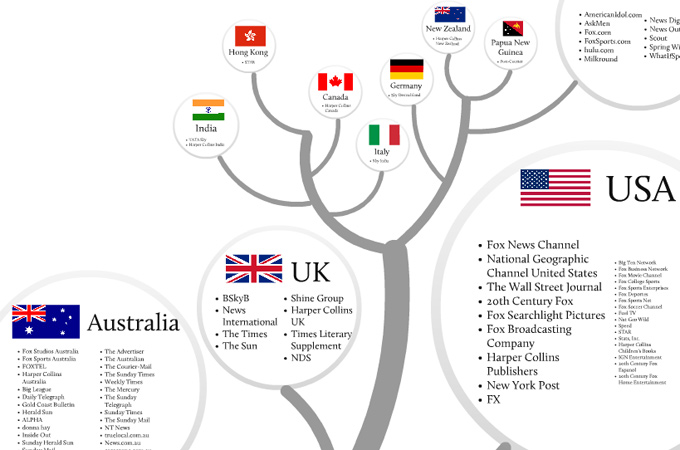




Media and Society
- Media Ownership and Structure
- A Large business or company, a combination of multiple businesses entitles operating in entirely different industries under one main group/business
- Example = Murdoch. Murdoch’s large influence over politicians allowed him to create a monopoly over tabloids and news BSkyB, in a way that can be linked to manufacturing consent as under Thatcher monopolies were illegal, however due to Murdoch and how his support would benefit her, she allowed him to control lots of the print media in Britain.
- Horizontal integration in Murdoch’s empire include Murdoch purchasing his son’s rapping company.
- Manufacturing consent can be linked = Chomsky
- Althusser can be linked to this
2. Media Regulation
- The government allowing certain types of media to be published or not
- The media is decided by the government on whether it can be published
- Murdoch only able to own 39% of Sky, even though he had 100% control over print media, such as the Sun and the Sunday Times
- A gatekeeper exerts power and the Prime Minister could be seen as a gate keeper, as they can say what media is allowed and what type of media isn’t.
3. Media Power and Control
- Relate to Chomsky’s 5 filters in Manufacturing consent
- An example of this can also be Bombshell (Film) and Murdoch’s empire including his main company News International.
- Roger Ailes was at the top of Fox News, and was pro-trump, however, Murdoch was anti-trump.
4. The Media informing/coercing policy and decision making
- Links to Habermas and the transformation of the public sphere
- In the Murdoch Dynasty, it links to Brexit as Murdoch forced Tony Blair to get the UK to leave the EU
5. Media working practices (Promotion, success & financial reward and journalistic practices)
- Links to Murdoch as his link to the Labour Party election in 1997, because Murdoch promoted Labour party to try and get people to vote for them.
- David Hesmondhalgh can be linked to this.
- Hesmondhalgh explores working practices
POST-COLONIALISM ESSAY
Post-colonialism is an important factor that can affect how we see things within the media. There are two main theorists who explore the link between society and media and these are J McDougall and Natalie Fenton. Firstly, Natalie Fenton can link to post-colonialism because she created a 3 phase plan of action, which includes the assimilation of colonial structures that correspond to the “Mother country”, an immersion into an ‘authentic’ culture and media types should fight and create national literature, which can be seen as the “mouthpiece of a new reality in action”. Following Fanon’s 3 phase actions, it is apparent that the mother country in Letter to the Free is America and and mother country in Ghost Town is the UK (more specifically London). Continuing on with Fanon’s 3 phases of action, it is significant that following the third phase of action, both Letter to the Free and Ghost Town are radical and are bringing awareness and trying to enforce chnages. Similarly, J McDougall is a theorist that we can apply to Letter to the Free. McDougall wrote a book called “Fake News vs New Media”, and a quote from his book is “There are always points historically where populations have been discontented or economic hardships have been exacerbated”. This quote from McDougall’s book denotes how Letter to the Free is a song about the history of the mistreatment of black lives and discrimination, which further links onto historical events, such as the Montgomery Bus Boycott, where Rosa Parks refused to give up her seat for a white man as it was a standard for black people to give up their bus seats and the sit-ins in Greensboro (North Carolina), where black people sat at the whites-only counter in Woolworth and refused to move. Therefore, Letter to the Free can be seen as radical because it is challenging the historic events that black people faced and the music video is asking for equal rights for black people and to end segregation and discrimination.
It is apparent that Ghost Town by The Specials and Letter to the Free by Common present society and the world in very contrasting ways. This is shown mainly through the narratives of the two music videos because Letter to the Free is about ending slavery and creating equal rights for all skin colours, however, Ghost Town is about the economic depression and the employment rates going up in London, which rose and spun out of control. Also, the music videos themselves are very different in their genres, as Letter to the Free is a hip hop rap style song, however, Ghost Town is a hybridisation on two very different music genres: ska and reggae. However, what is similar about both these videos are that they are radical and are bringing awareness to events that at the time of writing were currently happening around the world (and for Letter to the Free, are still sadly happening in the modern world today). Both these music videos are also seen as quite radical and show a prejorative viewpoint on society, such as Ghost Town being about the economic depression within the Uk and employment rates rising up and eventually running out of control and Letter to the Free is a plea from Common for equality for black people, which could be an event that had encouraged the Black Lives Matter protests of 2020.
It is very significant that both Letter to the Free and Ghost Town explore the concepts of post-colonialism. Two theorists who have came up with theories based around post-colonialism are Paul Gilroy and W.E.B Du Bois, who have both came up with theories based around post-colonialism. Gilroy wrote a book called “No Black in the Union Jack”, which can be seen as controversial because it challenges the ideas and messages that are brought across in Letter to the Free. Another concept that Gilroy explores originated from the ideas of W.E.B Du Bois and that is the idea that we as an audience has double consciousness. This idea of double consciousness links to both the music videos Letter to the Free and Ghost Town because double consciousness is the internal conflict which is experienced by subordinated or colonialist groups within an oppressive society. This links to both the music videos because the setting in Ghost Town is in the UK during the economical crisis, which left people out of work and refusing to leave the house. Similarly, Letter to the Free is set in an oppressive society in America because black people are experiencing discrimination and are getting a lack of rights compared to white people just because they are black and through historical events, it is evident that white people saw black people as Slaves and different to the white culture.
It is also suggested that through the use of post-colonialism, we are able to understand the concept of “the other”. Two theorists who explore how post-colonialism can show to concept of the other are Jacques Lacan and Edward Said. Jacques Lacan created a theory he called the “mirror theory”, in which he explored when an infant first sees their reflection in the mirror, it is the first time of them recognising themselves, however, for some infants, they may not recognise themselves in the mirror and instead see something else. This links very closely with both Letter to the Free and Ghost Town as by watching the music video and listening to the lyrics, it is apparent that many people will have different interpretations on the message of the song. Another theorist who explores the concept of the other is Edward Said’s theory of Orientalism. Orientalist is the link between culture, imperial power and colonialism and link very closely to the two music videos because by using the theory of “the other”, we can learn more about ourselves.
Finally, it is significant that music videos can change cultures and show the struggles they are facing. Two theorists who explore how music videos can change are viewpoint on cultures are Althusser and Gramsci. Althusser came up with the theory of ideological state apparatus’, which are used to describe how the structures of a civic society can serve to structure the ideological perspectives of society, which eventually will turn to form our own individual subject identity. Similarly, Gramsci came up with the theory of hegemony, which can illustrate how certain culture forms predominate over others, thus meaning that certain ideas can be more influential than others. Therefore, hegemony is not a total domination, but is instead a continual exchange of power through the use of ideas. Follwoing on from Gramsci’s theory, it is evident that post colonialism articulates a desire to reclaim, re-write and re-establish cultural identity and therefore maintain power of The Empire, even if the Empire has gone. These theories by Gramsci and Althusser also link to Letter to the Free and Ghost Town because hegemony is a struggle which emerges from negotiation and consent, linking to Letter to the Free because there is a lack of negotiation and equality given for black people compared to white people and in Ghost Town because there is a lack of negotiation of people fighting and cursing violence within the inner cities.
To conclude, it is apparent that the concept of post-colonialism can be applied to both Letter to the Free and Ghost Town and that music videos can be powerfully influenced by the dominant cultural and social attitudes of elements such as race, class and gender. This is shown in Letter to the Free as the song is heavily influenced by the mistreatment and discrimination of black people, which therefore makes Letter to the Free a plea to all for equality for black people and to end discrimination. Following on from this, music videos can change cultures and show the struggles they ar facing, such as how Letter to the Free is a plea for equality for black people and Ghost Town serves a purpose to bring awareness to the economic crisis and employment rates rising, as well as bring awareness to the violence that was occurring in cities across the UK. Post-colonialism also helps us understand the other, meaning we can learn about different cultures as well as learn more about ourselves. However, following on from the theory of the other, using the mirror phase by Lacan, it is evident that we may see the music videos’ messages differently compared to other, sung as how when a baby sees themselves in the mirror for the first time , they may understand it is them they are looking at, or they may see themselves as looking in the mirror at another person, thus identifying that people may interpret both Letter to the Free and Ghost Town differently, which is why it is important for music videos to ave a clear narrative structure and follow the tripartite narrative structure and therefore have a clear beginning, middle and end.
POST-COLONIALISM RECAP
Jacques Lacan
- Came up with the theory of “the other”
- A good way to develop an understanding of this term is in his exploration of the mirror stage of child development, whereby, as we cannot actually see ourselves as whole, we use a reflection to understand who we are / who we are not.
- Lacan proposed that in infancy this first recognition occurs when we see ourselves in a mirror. This was known to Lacan as the “mirror phrase”
- Applying that theory to culture, communications and media studies, it is possible to see why we are so obsessed with reading magazines, listening to music, watching films, videos and television because, essentially, we are exploring ‘The Other’ as a way of exploring ourselves.
Edward Said
- Came up with the theory of “Orientalism”
- Orientalism is the link between culture, imperial power and colonialism
- ” the power to narrate, or to block other narratives from forming or emerging, is very important to culture and imperialism ” – (Said, Culture and Imperialism (1993))
- ‘In this view, the outlying regions of the world have no life, history or culture to speak of, no independence or integrity worth representing without the West.‘ (Said, 1993: xxi).
- Orientalism (1978) alongside Culture and Imperialism (1993) are key texts written by the respected academic Edward Said. He asked if ‘imperialism was principally economic‘ and looked to answer that question by highlighting ‘the privileged role of culture in the modern imperial experience’ (1997:3)
Louis Althusser
- “all ideology hails or interpellates concrete individuals as concrete subjects, through the functioning of the category of the subject” (Althusser (1971:190))
- Came up with then theory of ISAs (ideological states apparatus)
- ISAs are used to describe the way in which structures of civic society – education, culture, the arts, the family, religion, bureaucracy, administration etc serve to structure the ideological perspectives of society, which in turn form our individual subject identity.
- “The category of the subject . . . is the category constitutive of all ideology’ (Althusser 214:188)
- Althusser noted that individuals often believe that they are ‘outside ideology’ and suggested the notion of ‘interpolation‘ as a way to recognise the formation of ideology.
Antonio Gramsci
- Gramsci suggests that power relations can be understood as a hegemonic struggle through culture.
- In other words, Gramsci raises the concept of Hegemony to illustrate how certain cultural forms predominate over others, which means that certain ideas are more influential than others, usually in line with the dominant ideas, the dominant groups and their corresponding dominant interests. In terms of postcolonialism Said, notes how ‘consent is gained and continuously consolidated for the distant rule of native people and territories’ (1993:59).
- Where dominant ideas, attitudes and beliefs (= ideology) are slowly, subtly woven into our very being, so that they become ‘common sense’, a ‘normal’, ‘sensible’, obvious’ way of comprehending and acting in the world.
- A way of reiterating European superiority over Oriental backwardness though image, sound, word, text, which in terms of postcolonialism, is ‘a flexible positional superiority, which puts the Westerner in a whole series of possible relationships with the Orient without ever losing him the relative upper hand.’ (Said, 1987:228)
- In other words, ‘being a white man was therefore an idea and a reality.’ (ibid)
- Hegemony is a struggle that emerges from NEGOTIATION and CONSENT.
- As such, it is not total domination (not totalitarianism or explicit propaganda) but a continual exchange of power, through ideas. In this sense, post colonialism articulates a desire to reclaim, re-write and re-establish cultural identity and thus maintain power of The Empire – even if the Empire has gone. Put another way, it is the power of representation, played out in the realm of the cultural and civic, looking to make an affect on the political and economic.
Franz Fanon
- 3 phases of action ‘which traces the work of native writers’:
- 1. Assimilation of colonial culture corresponding to the ‘mother country’ Chinua Achebe talks of the colonial writer as a ‘somewhat unfinished European who with patience guidance will grow up one day and write like every other European.’ (1988:46)
- 2. Immersion into an ‘authentic’ culture ‘brought up out of the depths of his memory; old legends will be reinterpreted’
- 3. Fighting, revolutionary, national literature, ‘the mouthpiece of a new reality in action’.
- “From America, black voices will take up the hymn with fuller unison. The ‘black world’ will see the light” (Fanon)
HOW USEFUL ARE IDEAS ABOUT NARRATIVE IN ANALYSING MUSIC VIDEOS? REFER TO ‘GHOST TOWN’ AND ‘LETTER TO THE FREE’ IN YOUR ANSWER
Within the Narrative theory, there are many theorists we can apply. An example is Todorov’s Tripartite which explores how all narratives should follow a structure of beginning equilibrium, disruption and ends with a new equilibrium. Another narrative theorist that can be explored is Levi-Strauss and his theory of binary opposites and Vladamir Propp, with his theory of media have 7 different character types, the hero, helper, princess, victim, dispatcher, father and false hero.
Each of the CSPs (both “Letter to the Free” and “Ghost Town”) clearly follow Todorov’s Triparite Narrative Theory, and therefore have a clear beginning equilibrium, disruption and new equilibrium. For example, this is shown in Ghost Town with the opening being the initial equilibrium of driving through the streets of the East End of London, showing how London has become a “ghost town”. The disruption is when the car that is being driven swerves out of control, which could be a message how the unemployment rates in the UK were rising upwards out of control and thus emphasising how the whole economy of the UK was out of control. However, the new equilibrium is found and that is when the band return to the car and are seen at the end skimming rocks on a beach, which could be a symbol of things returning back to normal, since previously the car was out of control, whereas now everything has been returned to normal.
Similarly, “Letter to the Free” also follows a tripartite narrative theory. The music video begins with a shot of the setting and then the focus on the black box, which could be interpreted as an infinite symbol of black lives and a constant reminder of the symbol behind the message that “black lives matter”. The disruption can be determined by Common being seen in a prison, playing music, demanding form “freedom”. It can be argued that the disruption of this music video can be the imprisonment of black lives. This also applies Levi-Stauss’ theory of binary oppositions because Common is singing about freedom, however in the music video, he appears to have no freedom because he is trapped in a prison. Finally, the new equilibrium of the music video is the empty shots of the prison and a zooming out close-up of a house, possibly Common’s house, with the outdoor shot symbolising freedom and the freedom he has finally got. Once again, the black box appears to once again remind us of the message of the song that black lives are infinite and are equal to any other skin colour.
However, in some cases while most media products are told in a linear sequence, the film Memento by Christopher Nolan has been told in both chronological and non-chronological order, with the colour scenes being non-chronological and the black and white scenes being in a chronological sequence. In a video, Christopher Nolan explained this as being like a “hairpin”. This differentiates from other films and having the plot alternate from chronological order (black and white scenes) to non-chronological order (colour scenes) keeps the attention of the viewer and makes them want to watch on because they are about to get to the climax and then it reverses.
Another theorist that can be used within narrative and moving image products is the Satellites and Kernels theory by Seymour Chatman. Chatman explains that every narrative should have satellites and kernels. The satellites are regarded as embellishments, developments and aesthetics (minor elements) just like the satellites in space which are just there and don’t really mean anything, whereas the kernels are regarded as the key developments of the narrative and the overall narrative structure. If you remove an element regarded as a satellite from a narrative, it may not affect it, however, if you remove a kernel from a narrative, it could change the whole plot and overall meaning of the narrative.
Overall, it is very useful for music videos to follow Todorov’s tripartite narrative theory. Not only does following a narrative theory make the music video and context of the song more easier to follow, applying a narrative theory also means that you are able to capture perceptions and messages which can’t be expressed by people personally. For example, Ghost Town is talking about the economic crisis of London during the 80s, however, without the narrative theory of the music video, people could misinterpret the song and see Ghost Town as a place where nobody lives, which is the complete opposite (linking to Levi-Strauss’ theory of binary opposites) since people were living in London, it wasn’t a ghost town with no people, it was a ghost town because everyone was in their homes and not going out to work. Finally, narrative is important due to the old saying of “pictures paint a thousand words”. It can be very hard to convey a message by speaking it, however, using a music video can be a visual way to help convey a message, which is why applying narrative to music videos is an important thing to do. Finally, Chatman’s theory of Satellites and Kernels are important within moving image products because if you change elements regarded as kernels, the whole narrative of the plot can change, yet if you remove elements known as satellites, there can create a minor change to the narrative and plot.
MEMENTO: NARRATIVE, CHARACTERS, TRUTH
- What is the significance of the story of Sammy Jenkiss to Leonard? How ‘true’ is this story? What does this tell us about the relationship between facts, memories and fiction?
It appears as if Sammy Jenkins is foreshadowing Lenny, as shown by the insulin shot scene with Sammy and then the insulin shot scene with Lenny at the end of the film.
- What does this tell us about the relationship between facts, memories and fiction?
This tells us that memories are different subjects, that facts are memories and the way Lenny doesn’t really remember his wife suggests that not all memories can be accurate or reliable.
- By the end of the film, do we feel like Leonard got the right man by shooting Teddy? List arguments for and against this view. How satisfying is the end of the film? What questions do you have left?
NARRATIVE, CHARACTER, IDENTITY, CONSISTENCY, STABILITY
- What are your impressions of Natalie – in the first scene in coffee shop? In second, at her house when Leonard awakes in her bed? In third when she comforts Leonard? In fourth, when she arrives at the house bloodied… and the fifth, where she and Leonard argue? To what extent could you see her as a completely different person in each situation?
The plot goes backwards and it is apparent that Natalie seems to have dual personalities as in every scene, she appears to be a different character, for example in the coffee shop she appeared to be quite rude and the villain, however, at the end of the film, when she argues and is found covered in blood, she appears vulnerable and is represented as the victim. Therefore the character type of Natalie appears to be changing each scene
MEMENTO AND POSTMODERNISM
Introduction
- Postmodernism can be understood as a philosophy that is characterised by concepts such as RE-IMAGINING, PASTICHE, PARODY, COPY, BRICOLAGE
- Post -modernism always fits into media and communications
- It’s an approach towards understanding, knowledge, life, being, art, technology, culture, sociology, philosophy, politics and history that is REFERENTIAL – in that it often refers to and often copies other things in order to understand itself.
- The film Memento is self-referential, it seems as if Lenny is self referential too, as identified by his tattoos reminding him of what to do
Parody vs Pastiche
- Memento includes pastiche, but is NOT A PARODY
- Pastiche is a work of art, drama, literature, music, or architecture that imitates the work of a previous artist
- Parody is a work or performance that imitates another work or performance with ridicule or irony
Intertextuality: surface signs, gestures & play
- In the film Memento, Lenny’s body is a surface sign
- As Shuker notes, two points are frequently made about music videos: ‘their preoccupation with visual style, and associated with this, their status as key exemplars of ‘postmodern’ texts.’ (2001:167)
- Shuker refers Fredric Jameson’s (1984) notion of the ‘metanarrative’ that ’embody the postmodern condition’ (168). For example, the fragmentary, decentred nature of music videos that break up traditional understandings of time and space so that audiences are ‘no longer able to distinguish ‘fiction’ from ‘reality’, part of the postmodern condition’ (ibid)
- Meta narrative = “the overall thing”
- Alongside their similarity to adverts (essentially the music video is a commercial tool to sell music products) ‘making them part of a blatantly consumerist culture‘ (ibid). And of course, the ‘considerable evidence of pastiche, intertextuality and eclecticism‘ (ibid) which is the focus of this next section.
- BRICOLAGE is a useful term to apply to postmodernist texts as it ‘involves the rearrangment and juxtaposition of previously unconnected signs to produce new codes of meaning’ (Barker & Jane, 2016:237)
- INTERTEXTUALITY suggests signs only have meaning in reference to other signs and that meaning is therefore a complex process of decoding/encoding with individuals both taking and creating meaning in the process of reading texts
Post-modernism
- It suggests that we don’t know what is true anymore
- Music videos are of a fragmentary and decentred nature to break up the traditional understandings of time and space, so that audiences are “no longer able to distinguish ‘fiction’ from ‘reality’.”
- Bricolage is the rearrangement and juxtaposition of previously unconnected signs.
- Surfaces and Styles over substances = surfaces and styles become the most important feature of defining features of the mass media and the popular culture
Memento: narrative
Narrative Theory
- “Structuralism has been very powerful in its influence on narrative theory. Its main virtue is that it is most interested in those things that narratives have in common, rather than in the distinctive characteristics of specific narratives.” – Turner p.85 ‘Film as Social Practice
- Many narratives (Film, TV, Radio) are usually LINEAR and SEQUENTIAL, in that they start at ’00:00′ and run for a set length. This means that they normally have a beginning, middle and end.
Narrative…story…plot
- According to Thompson (1990) ‘in studying narrative structure, we can seek to identify the specific narrative devices which operate within a particular narrative, and to elucidate their role in telling a story . . . it can be illuminating to focus on a particular set of narratives . . . and to seek to identify the basic patterns and roles which are common to them.’ (288)
- STORY is often associated with themes and meaning and can be decoded from all of the different elements that are used, for example, the characters, setting, props and themes etc.
- PLOT is the way in which the story (elements/themes/ideas/meaning) is organised and sequenced.
Todorov – Tripartite Narrative Structure
- Every narrative has a beginning, middle and end

Propp – Character Types
- Hero
- Helper
- Princess
- Villain
- Victim
- Dispatcher
- Father
- False Hero
Spheres of Action
- As Turner makes clear ‘these are not separate characters, since one character can occupy a number of roles or ‘spheres of action’ as Propp calls them and one role may be played by a number of different characters’ (2000:78)
Propp proposed that his list of stock characters are structured into a narrative that has 31 different functions that play an important role in organising character and story into a plot. Without going into detail for each, overal they can be dvided into the following sections:
- PREPARATION
- COMPLICATION
- TRANSFERENCE
- STRUGGLE
- RETURN
- RECOGNITION
Levi-Strauss – Binary Opposites
- Levi-Strauss examined the nature of myths and legends in ancient and primitive cultures, from this analysis he suggested that myths were used to deal with the contradictions in experience, to explain the apparently inexplicable, and to justify the inevitable’ (Turner 2000:83)
Satellites and Kernels
- Kernels: key moments in the plot / narrative structure
- Satellites: embellishments, developments, aesthetics
Barthes: Proairetic and Hermenuetic Codes
- Proairetic code: action, movement, causation
- Hermenuetic code: reflection, dialogue, character or thematic development
- Enigma Code: the way in which intrigue and ideas are raised, which encourages an audience to want more information.
Key Words:
- Ellison/Ellipsis = when you cut things out so things don’t take too long, ie the book burning scene in Memento
- Flashbacks = going back in time. In Memento, these are clearly identified by the black and white scenes
- Flash forwards = going forward in time
- Foreshadowing = flagging up something that needs to be known or will be fully developed later
- Dramatic Irony = we know something as an audience, but the characters don’t
- Parallel/simultaneous narrative = when time run simultaneously and two stories are running at the same time
- Light and Shade = you need some balance, you need to have some heavy stuff, then comedy like jokes. You can’t have the heavy intense stuff (Light) all the way through without any cuts of more calming scenes (shade)
- Non-sequitur= short story lines which can make up part of an enigma


